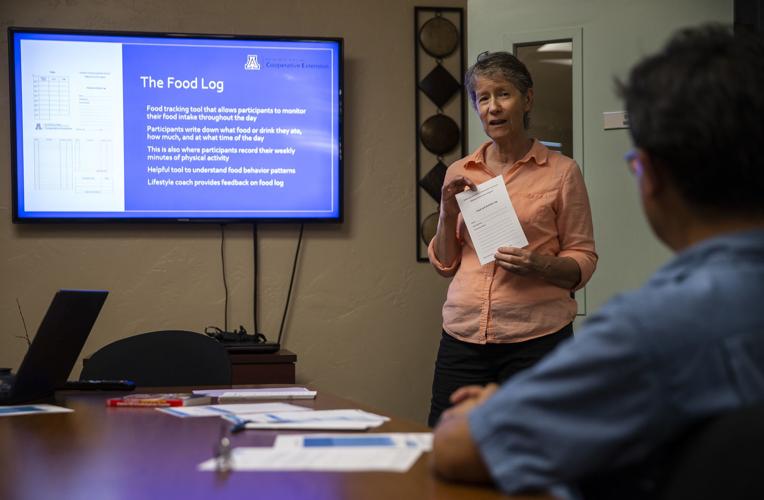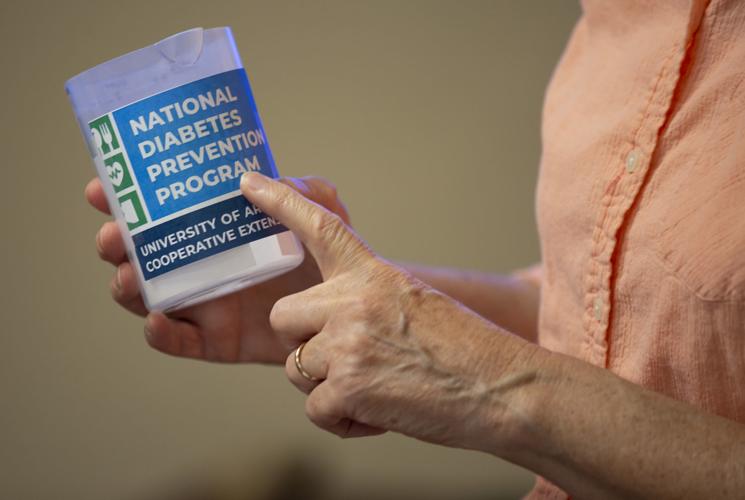A new University of Arizona program is helping people at risk of developing Type 2 diabetes take a step toward healthier living.
Offered through the UA’s Cooperative Extension service, the Diabetes Prevention Program is a free, 12-month program that encourages lifestyle modifications that have been proven to reduce the risk of Type 2 diabetes. The UA offers the program in seven counties across the state, including Pima County, which is still accepting applicants for its next year-long course (See box).
The prevention program is part of a national initiative led by the Centers for Disease Control and Prevention and is designed for those who are at high risk of developing Type 2 diabetes or have been diagnosed with prediabetes. According to the CDC, there are nearly 30 million Americans living with diabetes and there are 80 million Americans with prediabetes, but nine out of 10 people don’t know they are at risk.
“In Arizona, we estimate that there are about 2 million adults that are at high risk for developing diabetes. That data shows that it’s a huge problem, and it’s a hidden problem, because prediabetes doesn’t present symptoms,” said Vanessa da Silva, program director and assistant professor of nutritional sciences.
According to da Silva, prediabetes often goes undiagnosed because it causes blood sugar to present as higher than normal, but not high enough to be diagnosed as diabetes. Even in these early stages, there’s an increased risk for cardiovascular disease and other negative health impacts.
“The encouraging thing is that prediabetes is reversible, so we can bring these participants’ blood sugar back to a normal level, which cuts the risk in half for adults,” da Silva said.
In 2017, the UA trained 13 cooperative extension employees to serve as lifestyle coaches for the program, including Bernice Scobie, who serves as a coach for Pima County. During their 12 months in the program, participants learn how to eat healthy, add physical activity to their routine, manage stress, stay motivated and solve problems that can get in the way of healthy changes.
According to the CDC, individuals who participate in this program lower their risk for diabetes by 58% and seniors who participate in the program lower their risk by more than 70%.
Lifestyle changes
For participants in Pima County, this program was more than just a temporary fix.
“I thought it was very informative and down to earth,” said 73-year-old Mike Ronquillo. “It was things that were very attainable. You could make a difference just by changing the way you eat and learning to read labels and keeping track of what you’re eating.”
As a veteran who was diagnosed with prediabetes, Ronquillo said the program helped him focus on how much he was eating and how to control his portions. During the program, Ronquillo lost 10 pounds and said he became much more confident in his ability to maintain a healthy lifestyle.
Another participant, 67-year-old Frances Diaz, said she was urged by her doctors to try and lose weight before moving forward with a painful knee surgery. After losing 22 pounds in the program and 32 pounds overall, Diaz said the experience was what she needed.
“I finally started to listen. This program was about more than wanting to look better. It was a medical thing and it was about being healthy,” she said. “They didn’t scare me into it, but they made me realize that I didn’t have to have this operation if I would just lose some weight.”
Diaz said learning to read labels and weigh food were some of the most helpful aspects of the program for her, and she was surprised at how much she was eating on a daily basis.
“You honestly don’t realize how much you eat until you weigh everything and look at the calorie count. In our food logs, we had to document everything,” she said. “I actually cried the first time I measured my food because I just couldn’t believe it.”
Diaz said she received a simple suggestion from Scobie about filling her bowl or plate with two cups of vegetables and one cup of whatever entrée she was making.
“I told them in class, ‘Every Mexican that I know is turning in their grave right now. I put green beans in my menudo.’ And we all laughed. But one cup of menudo was enough,” Diaz said.
Ronquillo and Diaz also said one of the best things about the program was getting support from other participants.
“We encouraged each other and fed off each other and got really excited when someone had a breakthrough,” Ronquillo said. “It was really great support.”
For Diaz, the program not only helped to create healthy habits for herself, but for her whole family as well. The more successful she was, the more her family wanted to join her.
“We all changed our habits. The whole family has bought into it and we’re all supporting each other,” she said. “I cook the dinners and I do the shopping, so when I stopped buying all the bad stuff, everyone benefited from it. It affected the whole family.”
Reaching underserved communities
According to da Silva, the program also serves as a resource for underserved communities across Arizona. The UA’s Cooperative Extension service has the ability to send people all over the state, which helps to remove some barriers for people to attend.
“The need for programs like these is huge in Arizona, but specifically in places that are underserved,” da Silva said. “Because we have the Cooperative Extension network, even within Pima County, we have the ability to travel to deliver these classes to places such as Ajo or Green Valley and really make an impact in underserved parts of our state.”
La Paz, Greenlee and Apache counties are facing the highest burden of diabetes in the state, standing at 17.4%, 15.6% and 15.2%, respectively, according to the Arizona Department of Health Services.
Half of the program’s lifestyle coaches are also bilingual, which da Silva says is important within Arizona’s diverse communities. They are hoping to add a second lifestyle coach in Pima County who is bilingual by next year.
After earning full recognition status from the CDC and meeting its program criteria, the UA can also apply to become a Medicare provider for the diabetes prevention program and get reimbursed for its services.
“It helps us to continue to offer the program for free to those who are underinsured or uninsured,” da Silva said.
Overall, da Silva and her team said they hope to remove as many barriers for people as possible so that they can participate in the program without being concerned about travel or costs.
“They were very easy to listen to and they heard what we were saying,” said Diaz about the program coaches. “They didn’t judge us. It was OK if you didn’t lose weight each week. It was OK if you didn’t know what the right foods were or how to exercise. The instructors really made this program great.”





